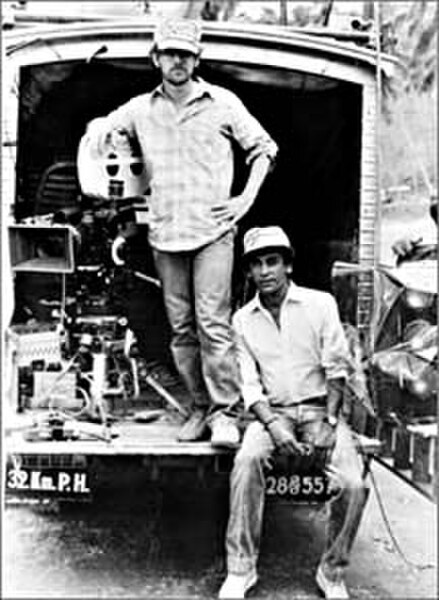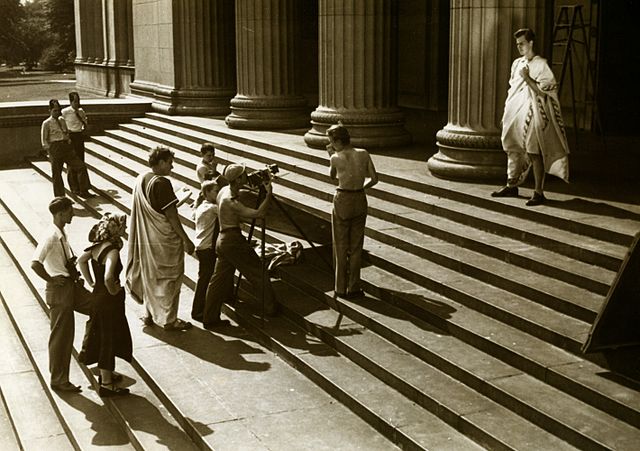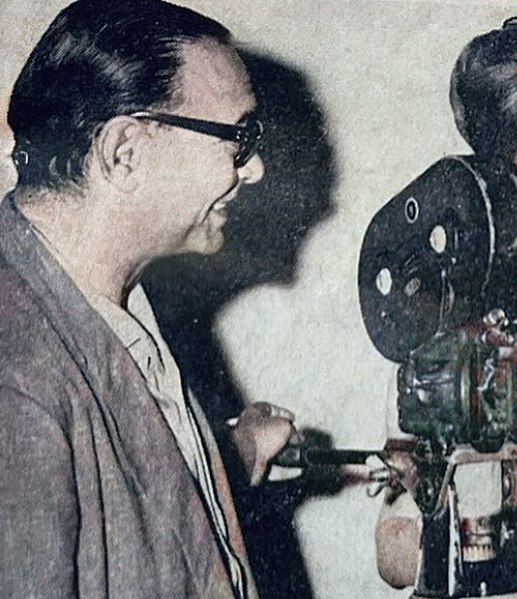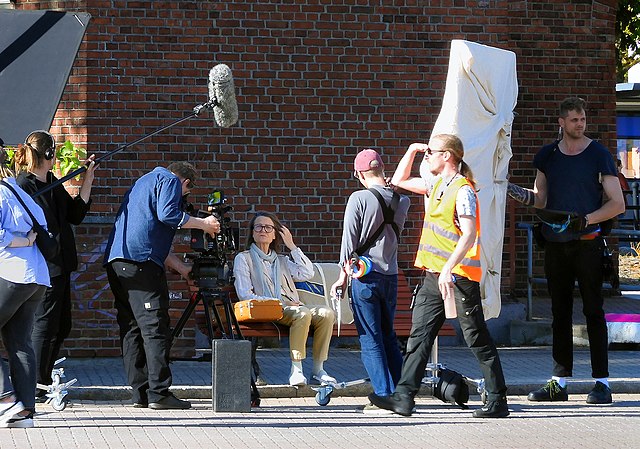A film crew is a group of people, hired by a production company, for the purpose of producing a film or motion picture. The crew is distinguished from the cast, as the cast are understood to be the actors who appear in front of the camera or provide voices for characters in the film. The crew is also separate from the producers, as the producers are the ones who own a portion of either the film studio or the film's intellectual property rights. A film crew is divided into different departments, each of which specializes in a specific aspect of the production. Film crew positions have evolved over the years, spurred by technological change, but many traditional jobs date from the early 20th century and are common across jurisdictions and filmmaking cultures.
Film director Dorothy Arzner had a successful career that spanned the silent film era into talkies. She started as a film editor and designed the first boom microphone.
A camera operator filming a scene from the Hollywood film Julius Caesar (1950), starring Charlton Heston.
Production of the television film Sherlock Holmes and the Case of the Silk Stocking (2004) at Somerset House in London.
Thelma Schoonmaker, a frequent collaborator on Martin Scorsese films, has received eight Academy Award nominations for Best Film Editing and has won three times—for Raging Bull (1980), The Aviator (2004), and The Departed (2006), which were all Scorsese-directed films.
Filmmaking or film production is the process by which a motion picture is produced. Filmmaking involves a number of complex and discrete stages, beginning with an initial story, idea, or commission. Production then continues through screenwriting, casting, pre-production, shooting, sound recording, post-production, and screening the finished product before an audience, which may result in a film release and exhibition. The process is nonlinear, as the director typically shoots the script out of sequence, repeats shots as needed, and puts them together through editing later. Filmmaking occurs in a variety of economic, social, and political contexts around the world, and uses a variety of technologies and cinematic techniques to make theatrical films, episodic films for television and streaming platforms, music videos, and promotional and educational films.

Steven Spielberg (standing) with Chandran Rutnam in Sri Lanka, during the production of Indiana Jones and the Temple of Doom (released 1984)
Mahmoud Zulfikar during the production of The Splendor of Love (released 1968)
A film production in Ystad 2022.







